
4 Ways You Can Be More Customer-Centric to Grow Your Business
Customer-centric brands put the customer experience at the heart of their business. Companies such as Netflix, Amazon, LinkedIn and Apple all ensure they understand their consumers’ needs, wants, loves hates and aspirations — their motivations and unmet needs — so they maximize profitability. A recent Warc study of top performing companies found that 78% of the companies that performed the best-embraced customer-centricity across all departments and functions of the business.
Effective customer-centric brand strategies recognize customers’ changing demands, have a clear brand purpose, and embrace big data at every level of their business. In order to help you make your business more customer-centric so you can increase your brand likability, referability and profitability we’re focusing on the importance of listening and how to ask the right questions.
We’re uncovering what a Consumer Journey Map is and how to integrate it into your brand strategy, marketing planning and campaigns. Once you have a deeper understanding of what makes your customers tick, you can leverage your data to be more strategic by taking a more personalized approach when marketing your brand and business.
It’s critical to remember that branding strategy is the bedrock underpinning your whole business. In fact, branding is NOT marketing or design. It provides the direction for marketing and design so it’s essential to map out your brand strategy in detail if you want to build a highly successful and profitable brand over time.
Branding, marketing and design are three separate disciplines performing different functions within a business. Each is essential and interlinked but if one key factor, like brand strategy, is missing its a bit like having a three-legged stool with one leg cut off so the whole business becomes compromised.
1. To Be More Customer-Centric, Ask Your Customers ‘Why’, Then Listen to and Analyse Their Answers
Customer-centric businesses take a highly proactive approach to managing relationships with their customers. They’re constantly refining and improving the experience their customers have every time they engage with their brand so they can delight and exceed expectations, thereby enabling them to get their brand personality and customer experience right.
Consequently, companies who form strong positive relationships with their customers enjoy multiple benefits to their bottom-line. We often get caught up in the operational side of the business and so sometimes forget to address the pain-points or unmet needs of our ideal target customers. If you don’t have an active customer service, marketing or sales team managing your customer’s experience, it can undermine the possibility of future business and have a very negative impact on the potential ‘life-time value’ of your customers.
Related: The Age Of Internal Branding And Selling It From The Inside Out
The reason you are in the market in the first place is because you’ve identified a customer problem — an opportunity or need that your product or service solution will address. If this is not the case, then it’s time to revisit your business model and go back to the drawing board.
One of the most influential methods for improving customer engagement and building rewarding relationships is to incorporate a constant rapport with your customers by identifying what they like about your product or service relative to what they don’t like. In theory, it seems simple, yet many businesses tend to rely on poorly designed surveys that fail to elicit actionable insights.
In his book, ‘Hooked’ author Nir Eyal discusses the five whys method and how it can be used very effectively to uncover and understand the internal triggers or causes of why a customer needs your product or service. In terms of a starting point, it’s a relatively simple but very effective tool because it enables you to build a more robust solution so you can take your brand and business effectively into the future. It boils down to figuring out why people want to use your product or service as opposed to having people merely rate their experience on a scale of 1-10.
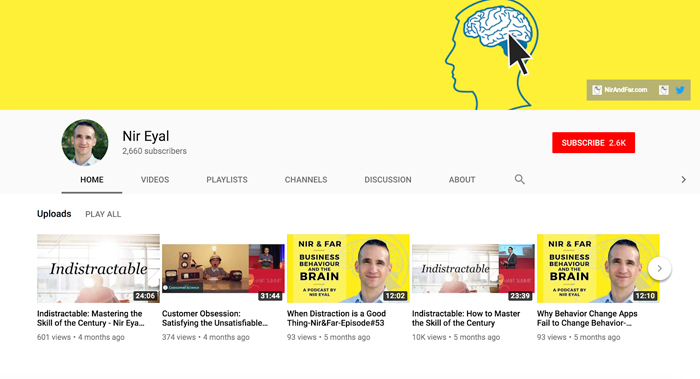
Image from Nir Eyal
The five whys method is a technique adapted from the Toyota Production System, described by Taiichi Ohno who wrote that it was the basis of their scientific approach. [1] “by repeating ‘why? ‘five times’, the nature of the problem as well as it’s solution becomes clearer.”
For example, let’s say we were trying to design a state of the art solution called “e-mail” and your gut tells you Elizabeth, a middle manager from Surrey would be someone who will use your product and below is the narrative with her to help us understand her needs better:
Why #1 Elizabeth, why do want to use email?
Answer: So I can send and receive messages
Why #2 Why do you want to do that?
Answer: Because I want to share and receive information fast
Why #3: Why do you want to do that?
Answer: To know what’s going on in the lives of my co-workers, friends, and family
Why #4 Why do you want to do that?
Answer: To know if someone needs her
Why #5 Why would she care about that?
Answer: I fear being left out of the loop
Now you’ve got something which can be incorporated into your brand story. Fear is a powerful internal trigger, and enables you to mould a better solution that addresses the inadequately met need and allows for a complete customer-centric solution. For more information about the Five Whys Method, check out the video below:
We know that sometimes it’s a struggle to develop your brand strategy so we’ve developed three different ways of working with us to help you build your brand successfully. So depending on your preferences:
- We can build your brand for you – find out more here or get in touch [email protected] or ring +353 1 8322724
- Empower you to build your brand – check out the Persona Brand Building Blueprint™ Mastermind here. This is a two-day intensive where you work on your brand with us codifying and mapping out your brand strategy for business growth. Alternatively, join our half-day Branding Accelerator Masterclass for a fast-injection of brand building essentials. Ask about our Personal and Corporate Leadership Brand Alignment Masterclass.
- Want a DIY solution? Check out our ‘How to Audit Your Brand’ eprogramme here and How to Build a Brand eprogramme here
Want to discover more about building your standout, №1 powerhouse, premium priced brand working with us so you can increase your profits and leave your competitors way behind?
- Schedule an appointment — we can meet in person or online
- Allow us to create a customised plan for you
- Let’s implement the plan together
- Contact us [email protected] or ring +353 1 8322724 (GMT Dublin/London time 9:00 – 17:30 weekdays)
2. Use Customer Journey Maps to Evaluate Your Customers’ Brand Experiences so You Can Be More Customer-Centric
Whether you’re a B2B, B2C or direct to consumer brand through an online channel, there are specific touchpoints or interactions customers have with your brand. A strategic mindset can help you improve your customers’ overall experience and so increase sales. Many businesses fail to properly understand the importance of being present at every stage of the customer journey, and often only show up at the point of purchase.
A customer journey map can be defined as a visual interpretation of an individual’s relationship with an organization, service, product or brand over time and across different channels.
According to Tandem Seven, “Customer Journey maps should be designed with specific customers in mind and, ideally, based on a deep research-driven understanding of your customers’ experiences.” [2] You want to ask yourself what your customer is doing when they are interacting with your brand throughout the customer journey.
In a report by McKinsey, “Industry-leading B2B companies increasingly respond to intensifying global competition by putting customer-centricity and experience at the heart of their strategy.” [3] Why? Because people are emotionally attached to brands that always have their best interest at heart. Not to mention the improvements “can lower customer churn by 10 to 15 per cent, increase the win rate of offers by 20 to 40 per cent, and lower costs to serve by up to 50 per cent.”
So how do you get in tune with your customers? A customer empathy map is a great starting point because its an exercise you can integrate with your market research so you’re more empowered to address your customers needs. It encourages you to put yourself in their shoes for a day and gets you to think more deeply about the various pain points or emotions they may go through on their customer journey with your brand.
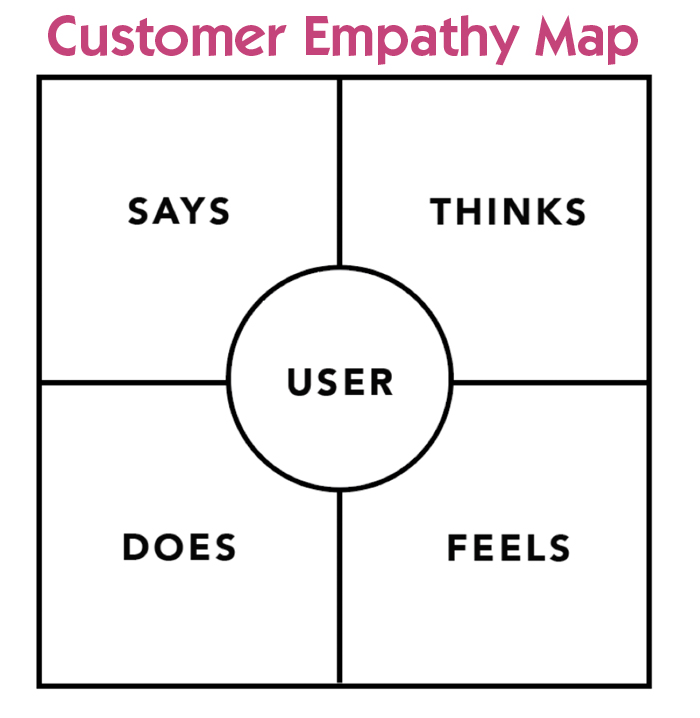
Related: Top 10 Brands for Customer Experience and What You Can Learn From Them
If you are in the programming industry, you will understand the importance of an ‘If and Then’ statement, a process where if something occurs or a person outputs a specific response then you tell the machine to act accordingly to that particular statement or input. The same theory can be applied to a customer journey map. In other words, you should put yourself in your customer’s shoes, ask yourself where in the timeline they will interact with your brand? What emotions will they try to voice at each particular stage? Moreover, what information will be best needed to convert them into a happy and loyal customer?
Related: Boring Brand? How To Create a Unique Brand and Market Positioning
The process often exposes not only weaknesses but opportunities that can lead to changes in your business model and brand positioning. “Monsanto, for example, is transforming itself with an online platform from a supplier of seed and crop-protection products to a productivity partner, providing advice on subjects ranging from product selection to sowing and harvest timing.” [4] This requires you to adapt and embrace change when your customers request a solution for an unmet need.
For more information check out Megan Grocki’s process on how to create a consumer journey map in the video below.
Case Study: How Skyteam Became More Customer-Centric by Using Customer Journey Maps
“SkyTeam is an alliance of 20 different airlines – each with their own strategies, processes and cultures. Their network covers over 1,000 airports and their members serve millions of passengers daily. In this complex environment, SkyTeam faced the challenge of trying to keep the customer at the centre of their work.”[5]
The company decided to launch a pilot customer centricity project for SkyPriority, an initiative of the business they value the most. How? By creating an app that allowed customers to provide feedback throughout their journey and at all relevant touch points. This enabled them to not only provide a better experience for their customers but also collect valuable research data to improve their business. What’s important to note is that they would not have been able to achieve these results without using customer journey maps.
Following the pilot implementation, they looked back at the impact and found that customers who had participated in the programme felt that, through the research, they could better collaborate with SkyTeam to improve the customer journey.” More importantly, they also felt more valued as a customer in comparison with people that did not take part in the programme. Airline managers also had a positive perception of the project and so measurably improved their implementation of SkyPriority.” [5]
3. Leverage Customer-Centric Personalisation to Build Affinity
Before we uncover what personalisation means to a customer, let’s take a look at some research on the subject. As stated by Business Insider a company called “Segment surveyed 1,006 U.S. adults to analyze attitudes, expectations, and experiences when it comes to personalized shopping, both online and in-store.” [4]
The survey found B2C customers are more likely to spend more when their shopping experience is personalized, but most retailers are missing the mark because 71% confirmed a very negative sentiment when it came to the customer experience. The results suggested 48% of customers tend to spend more when they have a personal shopping experience, so the question is, why don’t brands leverage personalization to boost revenue?
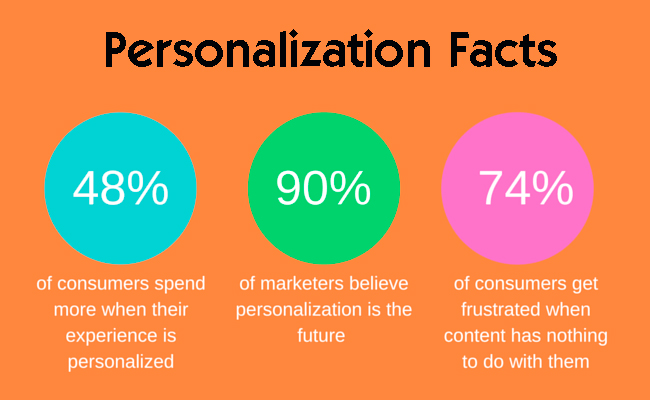
Image by Sharon Hurley Hall
In the B2B world, personalization and relevance are closely aligned and virtually interchangeable in some applications, and relevance affects effectiveness. B2B marketers often face more personalization challenges than B2C. For example they need to factor in things like time of day in their targeting because people are less receptive to work-related adverts during non-working hours.
Related: Use Psychology in Your Brand Strategy to Create Irresistible Brand Experiences and Increase Sales
B2B companies can embrace marketing automation tools to move customers along the sales funnel. Not only do these tools make your customer feel important, but they also make your sales team appear more responsive and in tune with customer preferences.
According to Harvard, “B2B buyers have slowly been conditioned the same way Netflix has conditioned their B2C customers to expect relevant offers when the time is right.” [6]
Can you confidently say your sales team is monitoring Linkedin daily to identify when to offer a new solution to a prospect? If time is an equal working employer, in other words, if every company values time the same when it comes to productivity are you using it wisely? Case in point if one of your clients leaves their current position for a new role, do your sales team identify their new status and reach out to them in a personalized manner? Studies suggest we are more inclined to make big decisions in a new role. Following social posts and hiring patterns enables you to personalize a solution when the time is right. If you want to learn other ways you can leverage Linkedin to close more sales, check out the video below:
Case Study: How B2C North Face Implemented Brand Personalization to Become More Customer-Centric
Outdoor sporting goods company The North Face, for instance, has an online Watson-powered shopping experience that harnesses NLP. Shoppers can obtain personalised product recommendations through natural conversation during the search process. The more information they learn about their customers the more they can segment their target audience and provide more impactful marketing of products that people actually want.
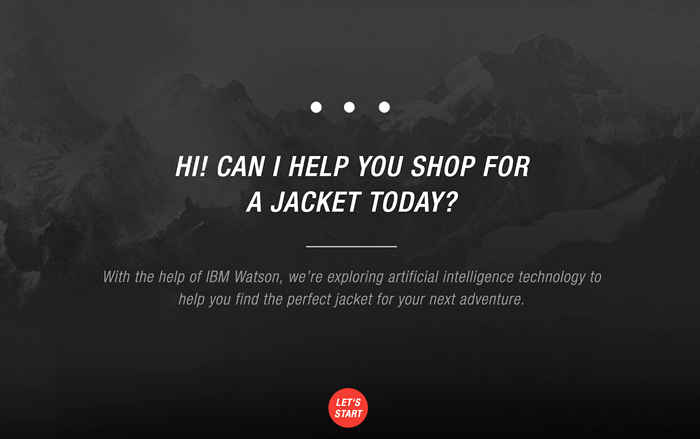
Image via North Face
Case Study: How B2B company, Cisco implemented Personalization to Become More Customer-Centric
Cisco a leading tech company from Silicon Valley manufactures and sells networking hardware, telecommunications equipment and many other technology services and products to improve businesses. They realized there was a lack of personalization in their marketing and sales strategy.
Related: Increase Sales Using Buyer Personas: Your Guide to Understanding and Targeting Your Ideal Customers
It became evident because different silos within the organization were selling similar solutions to the same people for the wrong reasons. To address the problem, “Cisco worked with the Buyer Persona Institute to conduct blind interviews with customers who operated in companies of varying sizes, industries, and countries. These interviews helped the team understand their audience’s real needs. They found out what they care about in their own language, not what we think they care about, but what they actually care about in their work.” [8] Now they had something valuable to pitch to their customers and it enabled them to be more personal in their messaging, and move them closer to converting the prospect into a long-term customer.
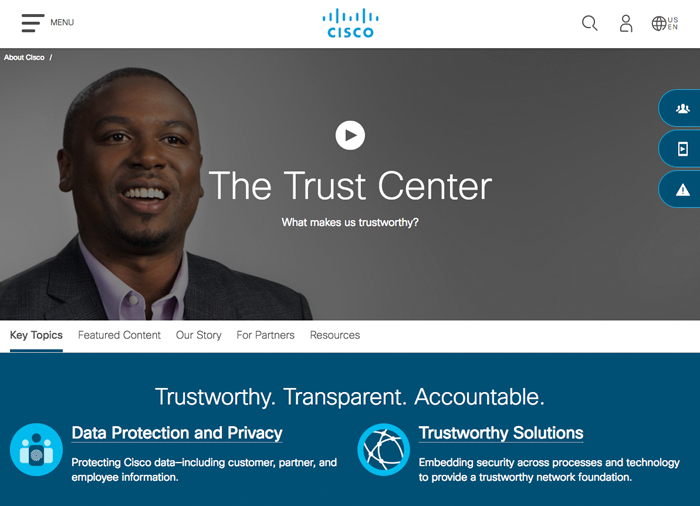
Image via Cisco
4. Use Big Data so it Underpins Your Customer-Centric Choices
Customer-Centric companies all have one thing in common. Clearly defined goals and applying the right metrics to their data. We often struggle to adopt a change in behaviour when a software update is involved, therefore inspiring your employees to embrace the new possibilities is critical to successful adoption.
Related: Brand Disruption as a Business Framework for Future Growth
Big Data enables us to offer a personal experience at scale. Think of it from a tailors perspective before the internet. Store Owners were most likely to know each customer by name and offered each customer a unique experience when they visited.
Scaling a business like that became an issue because you can’t be in more than one place at the same time. As shopping experiences shift online, the more we learn more about people’s behaviours such as what they last purchased, how often they shop with you and which type of advertising triggers them to make a transaction, the more bespoke and customer-centric your brand becomes — making your business more profitable.
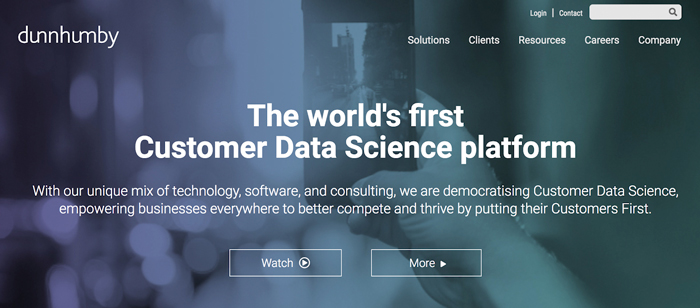
Image via Dunhumby
Discover how Dunnhumby turned vast amounts of data into personalized customer experiences in the video below:
As stated by Wired, “The right data delivered to your workforce at the right time can be the difference between a lost sale and a win or a negative experience with your brand and a happy customer.” They go onto suggest that three types of data can change an outcome:
- Traditional Data – Relates to any interaction someone has with your business.
- Social Data – Social networking has created more data for understanding sentiments and encouraging brand ambassadors who have the ability to influence others.
- Demographic Data – A laser focused micro view of who your customers are and their Purchaser Personas. The more you know about your ideal customers the more you can tailor your brand to meet their needs and so make it more attractive to them.
Is your business making use of all three of these? Moreover, have you changed the way you capture your data to ensure you get the most out of it? The more we learn about our customers, the more customer-centric we can become and so increase our profits.
How Netflix Gets to Know You Better
Have you noticed how Netflix is constantly providing you with new content on a frequent basis that is specific to what you have watched recently? They are essentially using machine learning to create an algorithm that is specific to you. If you are someone who prefers watching comedies, their algorithm is updated to provide you with content that is most relevant to your preferences.
Want to discover more about your standout, №1 powerhouse, premium priced brand working with us so you can increase your profits and leave your competitors way behind?
- Schedule an appointment — we can meet in person or online
- Allow us to create a customised plan for you
- Let’s implement the plan together
- Contact us [email protected] or ring +353 1 8322724 (GMT Dublin/London time 9:00 – 17:30 weekdays)
Final Word
Whether you’re in start-up mode or an established business launching a new product make your business a more transparent and highly responsive, customer-centric brand. There is a reason why data is named ‘big’. It’s in abundance and at the fingertips of anyone who essentially has a smartphone so leverage it to the full because it will enable you to become a highly customer-centric business.
When you are marketing your business, make sure you put yourself in the shoes of your customers and follow them throughout the entire consumer journey. People’s needs are forever evolving so you need to monitor and constantly re-iterate if you want to remain relevant and appealing.
Building a brand is both an art and a science, your entire brand strategy must stem from your brand DNA. Brand strategy and market research should inform the basis of the value you endeavour to create. Remember your research must be geared towards finding actionable insights to help you develop your value proposition and brand positioning so it delivers the desired results. Want to know more? Feel free to get in touch.
Questions to Consider
- How often do you engage with your customers on a deeper level?
- Do you understand what research design is and how to get actionable insights?
- Have you evaluated your customers’ behaviour throughout the consumer journey?
- Are you embracing a personalized sales strategy?
- Does your entire organization understand the concept of Big Data and are you leveraging it to the full?
Your Client Satisfaction Guarantee
- When you work with us we’ll create a customised brand building plan and strategy with clear investment for you tailored to your specific requirements and preferences
- You’ll know each step of your brand building journey before we start because we’ll discuss it, document it and agree on it with you before work commences
- You’ll have timelines, key milestones and deliverables to evaluate and approve for each stage and part of your brand building process
- Because we know the unexpected sometimes happens we can make adjustments along the way if you need it and if something extra is requested we’ll ensure you’re fully appraised about what that entails before committing
- As we achieve pre-agreed objectives you’ll be able to evaluate your brand building work and strategy in progress, coupled with the outcomes to ensure return on investment
Get in touch today because we’d love to get started helping you build your standout, powerhouse brand so you can increase your profits and leave your competitors way behind. Email us [email protected] or ring us +35318322724 (GMT 9:00-17:30) and ask about our VIP Brand Strategy Discovery.
Want to build your brand yourself? We also offer DIY programmes such as Personality Profile Performer™Programme that makes it easy for you to create a powerful brand from scratch yourself. Discover more here.
References
[1] Eyal, Nir. Hooked: Portfolio Penguin. New York: Free, 2014.
[2] https://www.tandemseven.com/journey-mapping/5-essentials-for-customer-journey-maps/
[5]https://www.warc.com/content/article/research-as-a-customer-experience-how-skyteam-is-creating-truly-consumercentric-research/108881[6] https://hbr.org/2017/07/how-b2b-sellers-are-offering-personalization-at-scale



